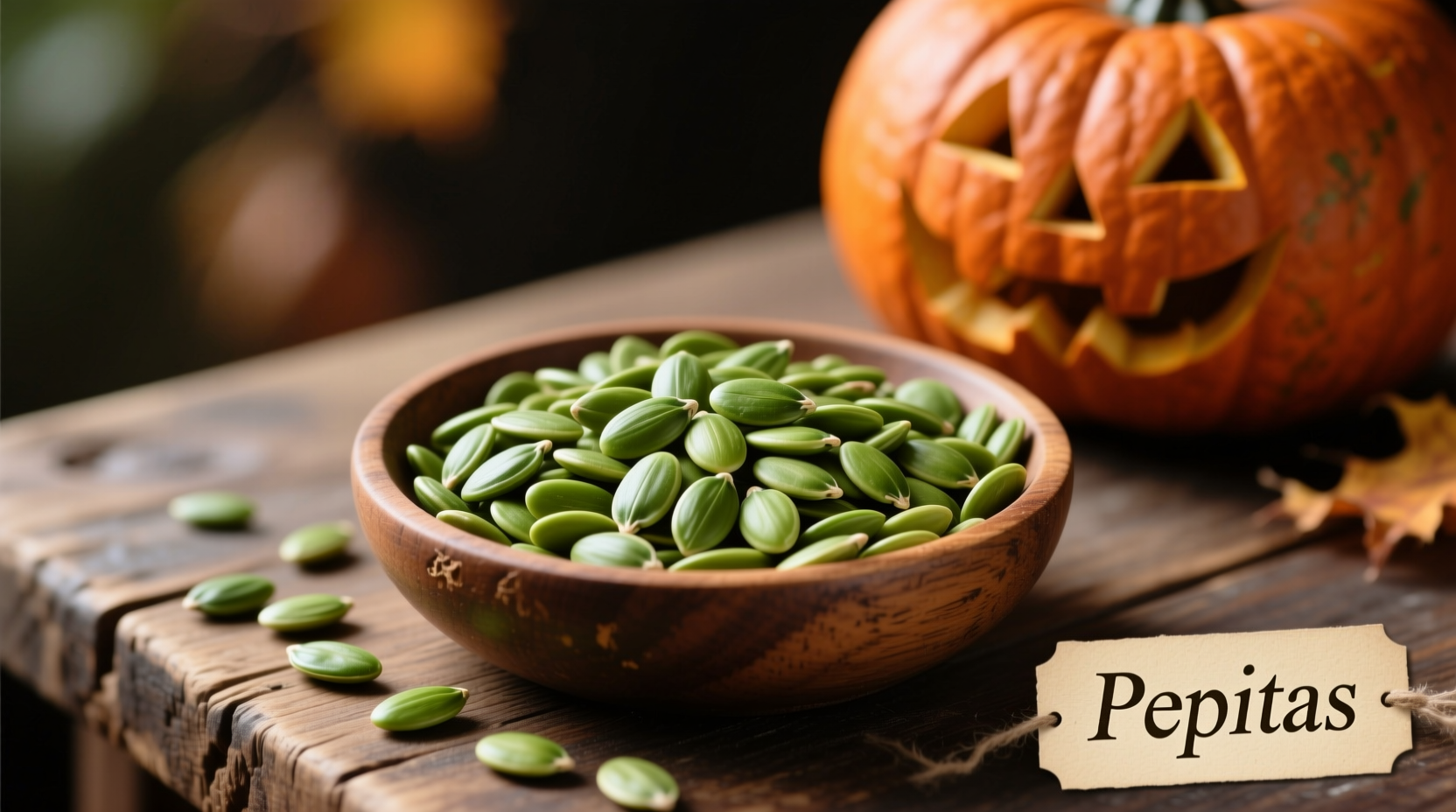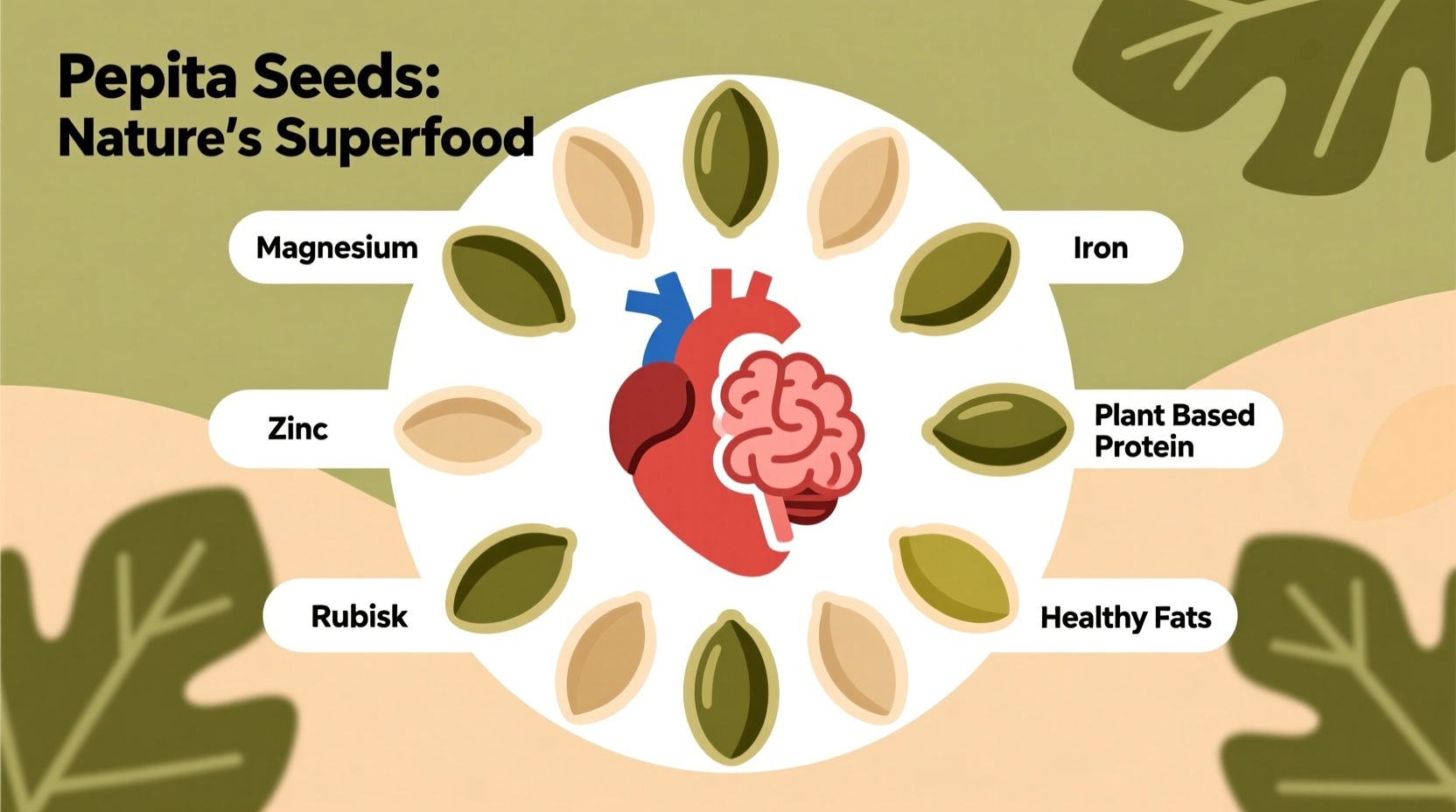When you're wondering what are pepita seeds good for, you're tapping into one of nature's most nutrient-dense superfoods. These small green powerhouses offer remarkable health benefits backed by scientific research, making them a valuable addition to any balanced diet.
Understanding Pepita Seeds: More Than Just a Snack
Pepitas, Spanish for "little seeds of squash," come from specific hull-less pumpkin varieties primarily grown in Mexico and Central America. Unlike regular pumpkin seeds with white shells, pepitas are the edible green kernels you find inside certain pumpkin types. This distinction matters because hull-less pumpkin varieties for pepita production contain significantly higher concentrations of beneficial compounds.

Nutritional Powerhouse: What Makes Pepitas Special
What sets pepita seeds apart from other seeds is their exceptional nutritional profile. According to USDA FoodData Central, a single ounce serving provides:
| Nutrient | Amount per Ounce (28g) | Daily Value % |
|---|---|---|
| Magnesium | 151mg | 37% |
| Zinc | 2.2mg | 23% |
| Iron | 3.7mg | 21% |
| Protein | 7g | 14% |
| Fiber | 5g | 18% |
Top Evidence-Based Health Benefits of Pepita Seeds
Heart Health Protection
Research published in the American Journal of Clinical Nutrition demonstrates that the magnesium in pepita seeds helps regulate blood pressure and reduce arterial stiffness. The seeds' high content of monounsaturated and polyunsaturated fats, including omega-6 fatty acids, contributes to improved cholesterol profiles. When considering what are pepita seeds good for heart health, their combination of magnesium, healthy fats, and antioxidants creates a powerful cardiovascular protective effect.
Blood Sugar Management
Multiple clinical trials, including a 2020 study in Nutrition Research, show that regular consumption of pepita seeds can improve insulin sensitivity. The seeds' magnesium content plays a crucial role here, as magnesium deficiency is commonly associated with insulin resistance. For those researching what pepita seeds are good for diabetes management, the evidence suggests they help stabilize blood glucose levels when consumed as part of a balanced diet.
Natural Sleep Enhancement
Pepita seeds contain tryptophan, an amino acid that converts to serotonin and melatonin in the body. According to research from the National Institutes of Health, the zinc in pepitas also helps convert tryptophan to melatonin more efficiently. This makes them particularly valuable for those exploring what are pepita seeds good for sleep improvement. Consuming a small serving (about 1 ounce) 1-2 hours before bedtime provides optimal sleep-supporting nutrients.
Prostate and Bladder Health Support
Traditional Mexican medicine has long used pepitas for urinary health, and modern science confirms these benefits. A comprehensive review in Phytotherapy Research found that compounds in pepita seeds called phytosterols may help reduce symptoms of benign prostatic hyperplasia (BPH). For men investigating what pepita seeds are good for prostate health, the evidence suggests regular consumption may support urinary function.
Practical Applications: How to Use Pepita Seeds Effectively
Daily Consumption Guidelines
For optimal health benefits, nutritionists recommend consuming 1-2 ounces (28-56g) of pepita seeds daily. This amount provides substantial nutritional benefits without excessive calorie intake. When determining how much pepita seeds to eat for health benefits, consider your overall dietary needs and calorie requirements.
Culinary Integration Tips
Unlike many supplements, pepita seeds offer versatile culinary applications. Here's how to incorporate them effectively:
- Raw consumption: Enjoy as a snack or salad topping (best for preserving delicate fats)
- Lightly toasted: Enhances flavor without damaging nutrients (350°F for 5-7 minutes)
- Blended into sauces: Create traditional Mexican pepita sauces like mole verde
- Added to baked goods: Incorporate into breads, muffins, or energy bars
- As seed butter: Blend with minimal oil for a nutrient-dense spread
Important Considerations and Limitations
While exploring what pepita seeds are good for, it's crucial to understand their limitations:
- Calorie density: At 140 calories per ounce, portion control matters for weight management
- Fragile fats: High heat damages beneficial fatty acids - avoid deep frying
- Nutrient absorption: Pair with vitamin C-rich foods to enhance iron absorption
- Not a medical treatment: While beneficial, they shouldn't replace prescribed treatments for health conditions
Storage and Quality Considerations
To maximize the shelf life and nutritional value of your pepita seeds:
- Store in an airtight container in the refrigerator (up to 3 months) or freezer (up to 1 year)
- Look for raw, organic, and preferably sprouted varieties for maximum nutrient availability
- Avoid seeds with rancid odors or bitter tastes, indicating oxidation of healthy fats
- Buy from reputable sources that store seeds properly to prevent nutrient degradation
Conclusion: Maximizing Pepita Seed Benefits
Understanding what pepita seeds are good for reveals their remarkable versatility as both a nutritional powerhouse and culinary ingredient. From supporting heart health to improving sleep quality, these small seeds deliver substantial benefits when incorporated wisely into your diet. The key is consistent, moderate consumption as part of an overall balanced eating pattern rather than expecting dramatic effects from occasional use.











 浙公网安备
33010002000092号
浙公网安备
33010002000092号 浙B2-20120091-4
浙B2-20120091-4